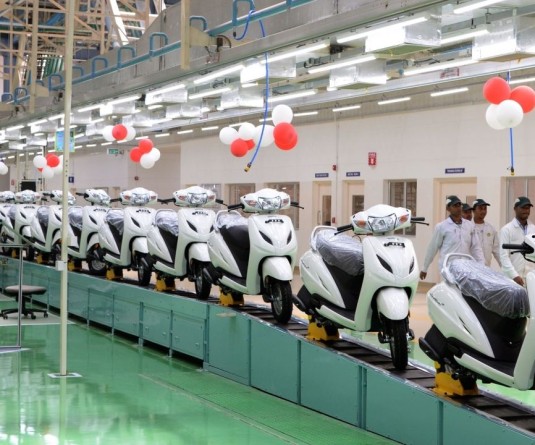IASN (Photo for representation)

New Delhi, December 12 (IANS) India’s retail price inflation based on the Consumer Price Index (CPI) declined to 5.48 per cent in November as the increase in prices of food items eased during the month bringing relief to household budgets, said the Ministry of Statistics on Thursday.
The slowing inflation marks a reversal of the increasing trend in the previous two months when the inflation rate touched 6.21 per cent in October.
“During the month of November, a significant decline in inflation is observed in vegetables, pulses, sugar and confectionery, fruits, eggs, milk and products, spices, transport and communication and personal care and effects subgroups,” according to the official statement.
The top five items showing the highest year on year Inflation at the all-India level in November are garlic (85.14), potato (66.65), cauliflower (47.70), cabbage (43.58) and coconut oil (42.13), according to the official figures.
The key items having the lowest year-on-year inflation in November 2024 are zeera (-35.04), ginger (-16.96), LPG used as cooking gas (-10.24) and dry chillies (-9.73).
The easing in inflation is a welcome sign as it was the first time that the rate of retail inflation crossed the RBI’s upper limit of 6 per cent in October. The RBI is waiting for retail inflation to come down to 4 per cent on a durable basis before it can go in for an interest rate cut to propel growth.
The Reserve Bank of India (RBI) on Friday slashed the cash reserve ratio (CRR) for banks by 0.5 per cent to make more funds available for lending to spur economic growth but kept the key policy repo rate unchanged at 6.5 per cent with an eye on inflation.
The CRR has been reduced from 4.5 per cent to 4 per cent which will infuse Rs 1.16 lakh crore into the banking system and bring down market interest rates.
The monetary policy decision maintains a delicate balance between controlling inflation and pushing up the growth rate in a slowing economy,
In his last monetary policy view, former RBI Governor Shaktikanta Das said, “India’s growth story is still intact. Inflation is on the declining path, but we cannot overlook the significant risks in the outlook. This risk cannot be underestimated,”
He was optimistic on the outlook for the economy, observing that “the balance between inflation and growth is well poised.”
India's industrial production rose 3.5 per cent in October 2024: Data
India's Index of Industrial Production (IIP) recorded a year-on-year growth of 3.5 per cent in October, up from 3.1 per cent in September this year, according to the data released by the Ministry of Statistics on Thursday.
The industrial growth rate of the manufacturing sector, which accounts for more than three-fourths of the index of industrial production (IIP), recorded a growth of 4.1 per cent in October.
The sector plays a key role in providing quality jobs to the young graduates passing out from the country's engineering institutes and universities.
Within the manufacturing sector, 18 out of 23 industry groups have recorded a positive growth in October over the same month of the previous year.
The top three positive contributors are – “Manufacture of basic metals” (3.5 per cent), “Manufacture of electrical equipment” (33.1 per cent) and “Manufacture of coke and refined petroleum products” (5.6 per cent).
The growth in the output of the electricity and mining sectors for October were recorded at 2 per cent and 0.9 per cent, respectively.
The figures based on user classification show that the production of capital goods which comprise machines used in factories went up by 3.1 per cent.
This segment reflects the real investment taking place in the economy which has a multiplier effect on the creation of jobs and incomes going ahead.
There was also a 5.9 per cent increase in the production of consumer durables such as electronic goods, refrigerators, and TVs during September, reflecting the higher consumer demand for these items amid rising incomes.
The output of consumer non-durables such as soaps and cosmetics went up by 2.7 per cent during the month.
The output of intermediate goods went up by 3.7 per cent while there was an increase of 4 per cent in infrastructure/construction goods during October compared to the same month of the previous year, the figures further showed.






